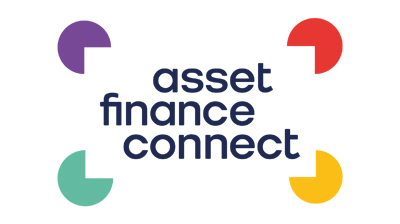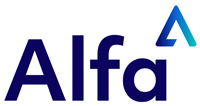These regulations created new fault lines as banks’ lending practices shifted towards “safer” asset classes. As a result, new, non-bank lenders entered the consumer and business markets to fill the void the banks left behind.
Does this portend a seismic shift in how the banks will participate in the equipment leasing industry? Are banks withdrawing from their long-standing role as funding sources for leasing companies?
In its new study, Lender Finance - How Does the Capital Stack? The Equipment Leasing & Finance Foundation’s report prepared by The Alta Group asks: how are the capital-raising activities of Independent lessors responding to this potential change?
While both new and pending regulations continue to cast uncertainty on the overall banking industry, the Lender Finance market is thriving as is the banks’ appetite to lend to the equipment leasing industry. While it is difficult to estimate its overall size, the Lender Finance market tends to be quite elastic reflecting economic conditions as well as new, financeable asset classes.
To that end, the emergence of alternative lenders, including business development companies (BDCs) and payday lenders, offer strong growth opportunities coupled with very attractive lending margins. These lenders see more modest growth in equipment leasing although they do recognize that the industry, as a whole, performed well during the Great Recession, a significant strength compared to these newer asset classes.
More now than before the recession
The number of Lender Finance participants is greater today than at the turn of the century given the strong growth rates and attractive margins in a variety of asset classes from the well-established leasing industry to financeable new and emerging asset classes.
The complexion of these new lenders is an interesting mix of traditional banks, FinTech Venture Capital, Private Equity and to a lesser extent, insurance firms.
Banks are attracted to the Lender Finance market because it allows them to participate in certain assets classes that are difficult, for either regulatory, structural, geographic reasons. Lender Finance enables them to develop significant scale in origination, asset and obligor management.
So what does a thriving Lender Finance market with new types of lenders imply for Independent lessors?
Although there are more lenders with an appetite for lease assets in the space, they are discerning and methodical in selecting on which horse to place their capital.
Simply put, with performance come options for funding. Strong Independent lessors demonstrated their ability to weather a financial crisis and emerge with performing portfolios and stronger balance sheets. Those in this category boast more than $25 million in equity value and post annual volumes levels north of $250 million. Some Independents, in the midst of the crisis, were committed to preserving the balance sheet through both additional amounts and sources of equity.
A course for growth
Paramount to a Lender Finance provider’s view of an attractive client is how well the management team has set a course for growth and followed through on delivering excellent overall portfolio performance. Bank lenders first and foremost want a management team that has honed a successful business strategy and adhered to it while managing the associated lease underwriting with focus and discipline.
Large Independents are experiencing more flexibility in bank line structure amid pricing that improved and has now stabilized post crisis. Lender Finance providers are more likely to offer flexibility in structuring advance rates than pricing. Most lessors have multiple bank lines with costs associated in the 100-200 basis point ranges over 30-day London Interbank Offered Rates (LIBOR).
Securitization is the perfect funding pairing to bank lines for Independents strong enough to access the asset-backed market. Annual or semi-annual securitization issuance freeing up bank lines for future volume is the most common funding framework. Pricing for securitization is typically 35-50 basis points better than bank lines.
Only the largest Independents can satisfy the arduous, costly legal and reporting requirements to issue and service securitization. For those with the resource and size sufficient to have re-entered the securitization market post crisis, it is once again a powerful tool to ensure ability to grow and optimize overall blended cost of funds.
Capital continues to flow into the equipment leasing market based on the strength of the assets yet the new regulatory environment for US and European Bank lenders has had a mirroring effect on Independents.
Strict requirements
They feel the effects of changing capital requirements compliance with a heightened regulatory environment in the US and Europe through tightened covenants and strict requirements.
Optimizing funding strategy in the midst of the new regulatory reality for lenders has created a new challenge in the effort to maintain a consistent capital funnel.
Moreover, the strategy must enable the business strategy by providing funding for the right new business volume, mix of credits, transaction sizes and types. In this post-crisis environment, the optimal approach to accomplish this is to maintain diversity both in number, type and geographic origin of lending institutions. Larger Independents have multiple banks lines and have shown a preference for a mix of US and European-based lenders.
The perfect environment
The strong performance of equipment leasing portfolios and the relatively higher yields they offer are beginning to garner the attention of non-traditional lenders to the space. This dynamic on top of regulatory constraints faced by bank lenders and increasing desire for funding of nonstandard contracts as well as continued technology innovation has created the perfect environment for new entrants.
Insurance companies and hedge funds are among the strong new entrants. Although structure and cost may be higher than traditional bank lines for vehicles offered through these new entrants, the trade-off may well be worth it for Independents looking for breadth and flexibility within their stable of funding sources.
Although banks have had to make adjustments to their terms and structure in funding lines offered to Independent Lessors, lending into the space remains very attractive to banks as do participation in the direct origination of leasing assets.
This study found no evidence to suggest banks are pulling back on Lender Finance or their desire to grow their direct leasing businesses.
Recent M&A activity provides evidence that banks intend to grow their leasing businesses through acquisition. Beyond the immediate asset growth acquisitions offer, the cost of funds advantage banks have over Independent lessors adds an instant bump to margins over and above the already superior yield these assets offer to traditional bank loan products.
Significant examples post crisis of banks acquiring leasing companies include; City National’s purchase of First American, Wells Fargo’s 2016 acquisition of GE Capital’s equipment finance business, CIT buying Direct Capital in 2014 and Umpqua Bank’s 2013 purchase of Financial Pacific.
Lender Finance will continue to be a stable source of capital for the Independent lessors that meet the lending standards. Should there be a credit event with Alternative Lenders, Independent lessors will likely benefit from a flight to quality.
The Equipment Leasing & Finance Foundation’s new study, Lender Finance - How Does the Capital Stack? is prepared by The Alta Group.
http://www.store.leasefoundation.org/cgi-bin/msascartdll.dll/ProductInfo?productcd=LenFin2016








